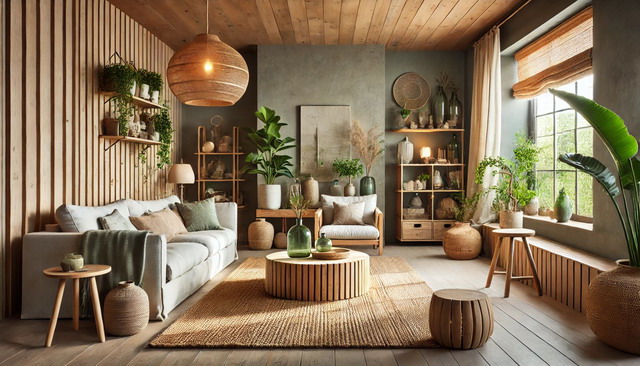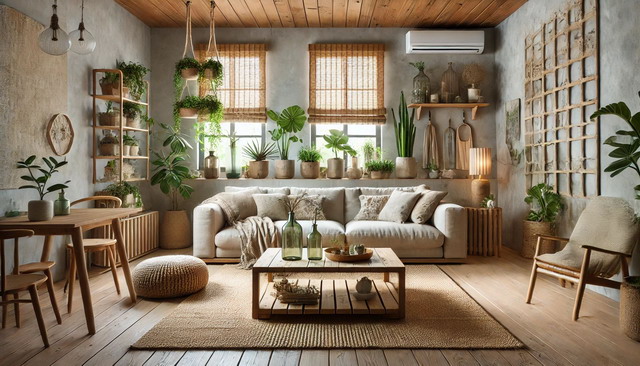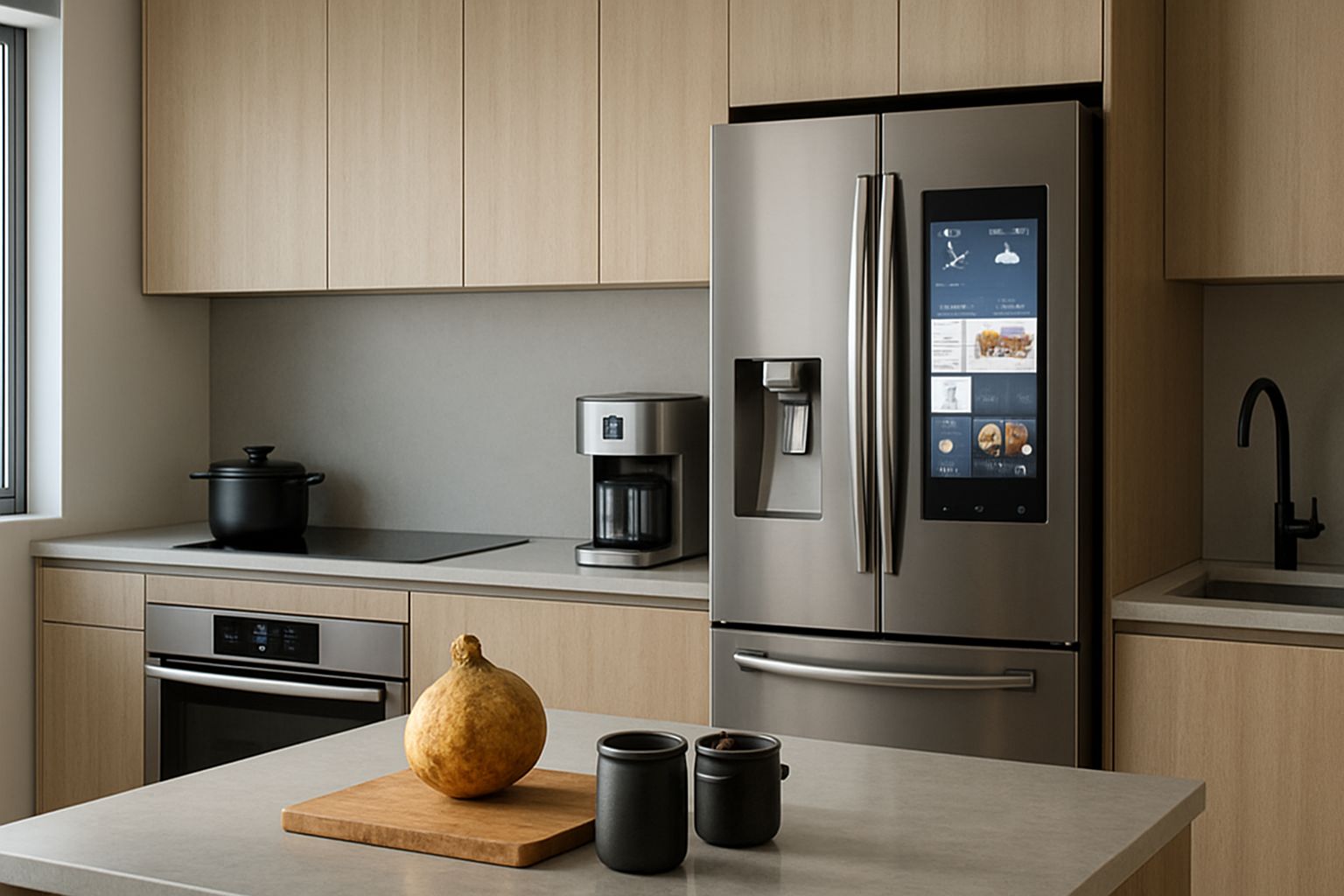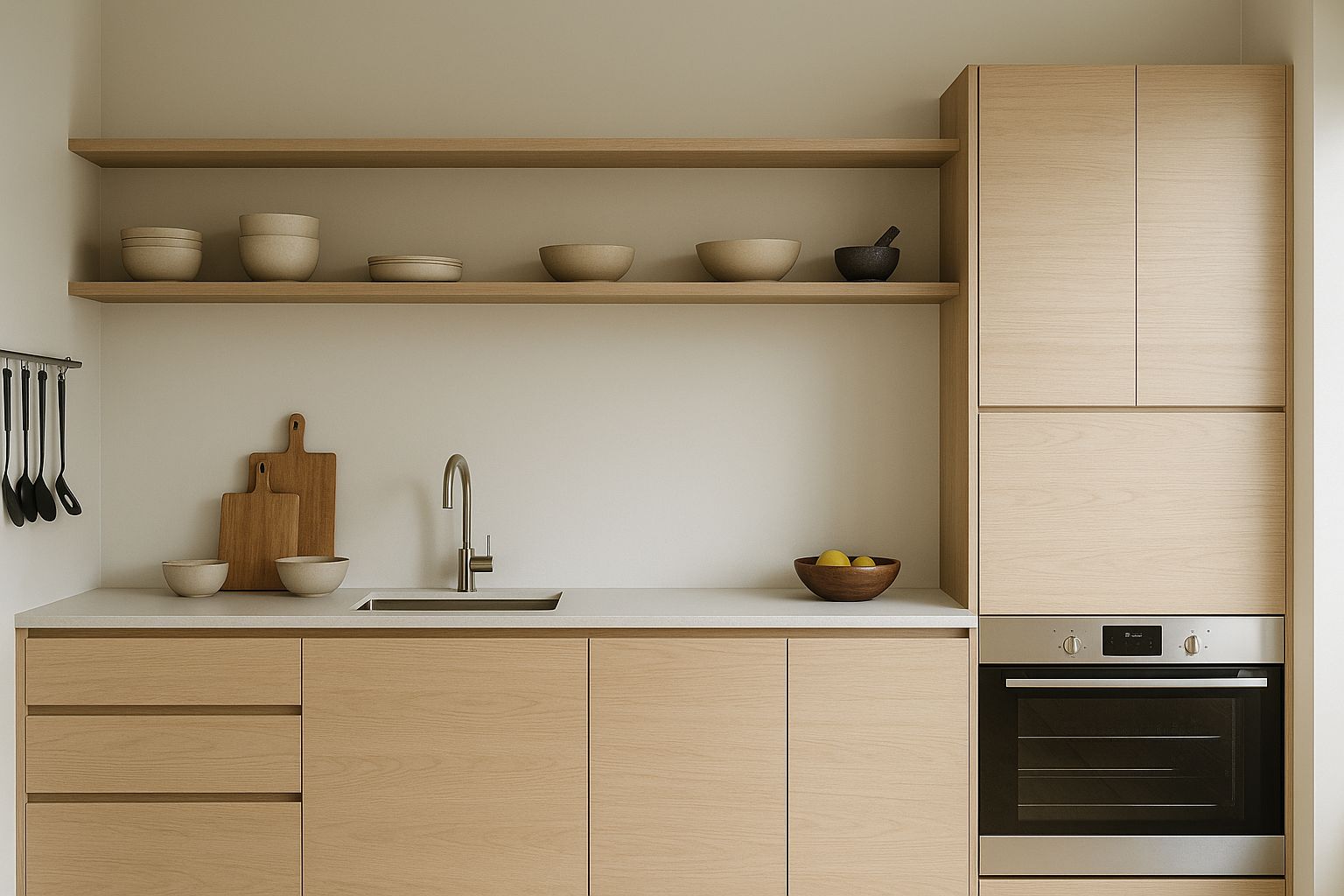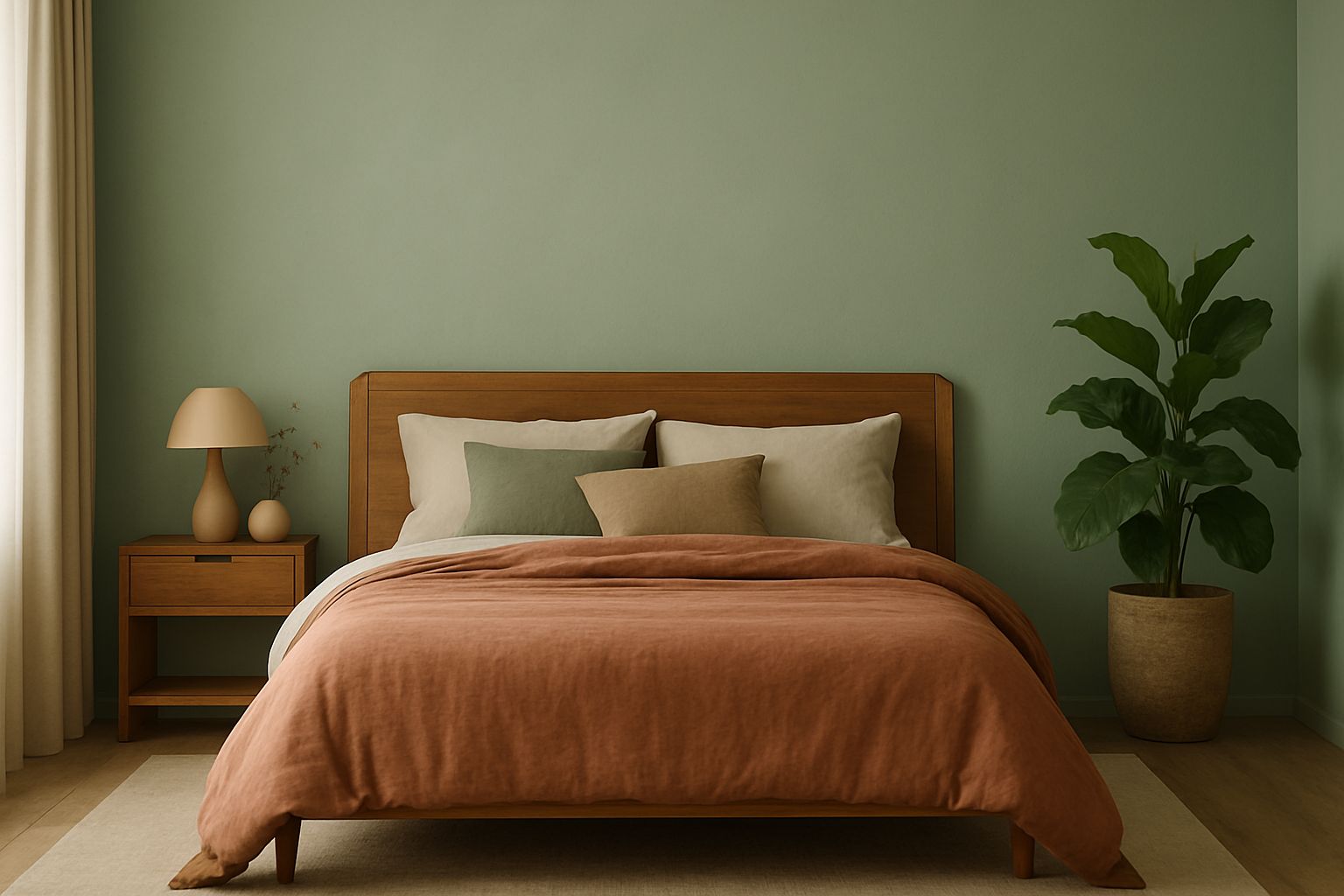Creating an eco-friendly living room is more than a design trend; it’s a lifestyle choice that benefits both you and the environment. From sustainable furniture to non-toxic paints, eco-friendly decor options are varied and accessible. This comprehensive guide explores the latest trends in eco-friendly living room decor, providing practical tips and inspiration for transforming your space into a sustainable haven.
Sustainable Living Room Furniture Ideas
Sustainable furniture is crafted from materials that have a reduced impact on the environment. These materials are often recycled, reclaimed, or sourced from renewable resources. Sustainable furniture production also emphasizes ethical labor practices and minimal environmental footprints.
Types of Sustainable Furniture Materials
- Bamboo: Bamboo is a fast-growing, renewable resource that is both durable and stylish. It’s an excellent choice for furniture like coffee tables, chairs, and shelving units.
- Reclaimed Wood: Using reclaimed wood reduces the demand for virgin timber and gives new life to old materials. Each piece has a unique history and character, adding charm to your living room.
- Recycled Metal and Plastic: Furniture made from recycled metals and plastics helps reduce landfill waste. These materials are often used in modern and industrial-style furniture.
Benefits of Sustainable Furniture
- Environmental Protection: Sustainable furniture reduces deforestation and minimizes waste.
- Healthier Home Environment: Many sustainable furniture options are free from harmful chemicals, improving indoor air quality.
- Longevity: High-quality sustainable furniture is often more durable and long-lasting.
Popular Brands Offering Eco-friendly Living Room Furniture
- West Elm: Known for their commitment to sustainability, West Elm offers a wide range of eco-friendly furniture made from responsibly sourced materials.
- Joybird: This brand specializes in customizable, mid-century modern furniture crafted from sustainable materials.
- VivaTerra: VivaTerra offers unique, artisan-crafted furniture pieces that emphasize sustainability and fair trade practices.
Eco-friendly Home Decor for Living Rooms
Definition and Importance of Eco-friendly Home Decor
Eco-friendly home decor includes items made from sustainable materials, produced under ethical conditions, and designed to reduce environmental impact. Choosing eco-friendly decor helps conserve resources, supports ethical businesses, and creates a healthier living space.
Examples of Eco-friendly Decor Items
- Rugs: Opt for rugs made from natural fibers like wool, jute, or organic cotton.
- Curtains: Choose curtains made from organic cotton or linen, which are free from synthetic chemicals.
- Cushions and Throws: Look for items filled with natural materials like kapok or organic wool.
How to Choose Eco-friendly Decor
- Check Materials: Choose natural, renewable materials whenever possible.
- Verify Certifications: Look for certifications like Fair Trade, Global Organic Textile Standard (GOTS), or OEKO-TEX®.
- Support Ethical Brands: Research brands to ensure they follow ethical production practices.
Where to Shop for Eco-friendly Home Decor
- Etsy: Find handmade, eco-friendly decor items from artisans around the world.
- Made Trade: This online store curates a selection of sustainable and ethically made home decor.
- Pottery Barn: Offers a range of eco-friendly decor options, including organic textiles and sustainably sourced furniture.
Organic Cotton Living Room Throw Blankets
What is Organic Cotton?
Organic cotton is grown without synthetic pesticides or fertilizers, making it a more environmentally friendly and healthier option compared to conventional cotton. The farming methods promote biodiversity and soil health.
Benefits of Using Organic Cotton Throw Blankets
- Hypoallergenic: Organic cotton is gentle on sensitive skin and free from harsh chemicals.
- Breathable and Comfortable: Organic cotton throws are soft, breathable, and perfect for all seasons.
- Sustainable: Organic cotton farming conserves water and reduces environmental pollution.
Style Tips for Incorporating Organic Cotton Blankets into Your Living Room
- Layering: Use organic cotton throw blankets to add texture and warmth. Drape them over sofas or chairs.
- Color Coordination: Choose colors that complement your existing decor for a cohesive look.
- Seasonal Changes: Swap out throws seasonally to refresh your living room’s appearance.
Recommended Brands for Organic Cotton Throw Blankets
- Coyuchi: Offers luxurious organic cotton throws in various textures and colors.
- Boll & Branch: Known for their ethically sourced and organic cotton products.
- West Elm: Provides a range of stylish organic cotton throw blankets.
Recycled Materials for Living Room Decor
Overview of Recycled Materials Used in Decor
Recycled materials are repurposed from waste products, giving them a new life in the form of home decor. Common recycled materials include glass, metal, plastic, and wood.
Creative Ways to Use Recycled Materials in Living Room Decor
- Recycled Glass Vases and Lamps: Add a touch of elegance with recycled glass decor items.
- Repurposed Metal Shelving: Industrial-style shelving units made from recycled metal can serve as functional and stylish storage.
- Reclaimed Wood Furniture: Unique furniture pieces crafted from reclaimed wood add character and history to your living room.
Examples of Products Made from Recycled Materials
- Eco-friendly Rugs: Rugs made from recycled plastic bottles or reclaimed textiles.
- Art and Wall Decor: Pieces crafted from recycled paper, metals, or wood.
- Furniture: Items like coffee tables or chairs made from reclaimed wood or metal.
Benefits of Using Recycled Materials for the Environment
- Reduces Waste: Diverts materials from landfills.
- Conserves Resources: Reduces the need for virgin materials.
- Promotes Innovation: Encourages creative and sustainable design solutions.
Low-waste Living Room Design Tips
Principles of Low-waste Design
Low-waste design focuses on minimizing waste throughout the lifecycle of a product, from production to disposal. It emphasizes durability, repairability, and recyclability.
Tips for Reducing Waste in Your Living Room
- Buy Second-hand: Purchase pre-owned furniture and decor items.
- Repair and Upcycle: Fix and repurpose existing items instead of buying new.
- Choose Multipurpose Furniture: Opt for furniture that serves multiple functions to reduce clutter and waste.
DIY Low-waste Decor Projects
- Upcycled Plant Pots: Transform old containers into stylish plant pots.
- DIY Candle Holders: Create candle holders from reclaimed wood or glass jars.
- Fabric Scraps Art: Use fabric scraps to make unique wall art.
Case Studies of Low-waste Living Rooms
- Minimalist Approach: A minimalist living room that prioritizes quality over quantity, with multipurpose furniture and simple decor.
- Upcycled Wonderland: A vibrant living room featuring upcycled furniture and DIY decor projects, showcasing creativity and sustainability.
Non-toxic Paint Options for Living Rooms
Introduction to Non-toxic Paints
Non-toxic paints, also known as low-VOC (volatile organic compounds) or zero-VOC paints, emit fewer harmful chemicals into the air, making them safer for both the environment and indoor air quality.
Health Benefits of Non-toxic Paint
- Improved Indoor Air Quality: Reduces the presence of harmful chemicals in your home.
- Safer for Children and Pets: Non-toxic paints are less likely to cause allergic reactions or health issues.
- Environmentally Friendly: Lower emissions contribute to less air pollution.
Popular Brands and Types of Non-toxic Paint
- Benjamin Moore Natura: Known for its zero-VOC formula and wide range of colors.
- ECOS Paints: Offers a variety of non-toxic, eco-friendly paints and finishes.
- Sherwin-Williams Harmony: This paint line is low-VOC and has excellent coverage.
Tips for Choosing and Applying Non-toxic Paint in Your Living Room
- Test Samples: Try out paint samples to ensure you like the color and finish.
- Ventilation: Ensure good ventilation during painting to minimize exposure to any lingering fumes.
- Prep Properly: Clean and prime surfaces well to ensure the paint adheres properly.
Upcycled Living Room Decor Inspiration
What is Upcycling and Why is it Important?
Upcycling involves creatively reusing and transforming waste materials or old items into new, valuable products. It reduces waste and conserves resources, making it a key practice in sustainable living.
Inspirational Ideas for Upcycled Living Room Decor
- Repurposed Furniture: Turn old doors into coffee tables or bookshelves.
- DIY Art: Create wall art using recycled materials like metal, wood, or fabric.
- Unique Lighting: Craft lamps and light fixtures from reclaimed materials.
How to Start Upcycling Your Decor Items
- Identify Items to Upcycle: Look for items in your home that can be repurposed.
- Gather Materials: Collect necessary tools and materials for your project.
- Get Creative: Use your imagination and online resources for inspiration.
Success Stories of Upcycled Living Room Transformations
- Vintage Revival: A living room transformed with vintage furniture pieces repainted and repurposed for modern use.
- Industrial Chic: Using reclaimed wood and metal to create a stylish, industrial-themed living room.
Green Living Room Decorating Tips
General Tips for Creating a Green Living Room
- Choose Sustainable Materials: Opt for furniture and decor made from renewable or recycled materials.
- Energy-efficient Appliances: Use energy-efficient lighting and electronics.
- Indoor Plants: Incorporate plants to improve air quality and add natural beauty.
Incorporating Natural Elements into Your Decor
- Wood Accents: Use natural wood for furniture and decor.
- Stone Features: Add stone elements like a fireplace or decorative stone wall.
- Plants and Greenery: Use a variety of indoor plants for a lush, natural look.
Energy-saving Tips for a Green Living Room
- LED Lighting: Switch to LED bulbs to reduce energy consumption.
- Smart Thermostat: Install a smart thermostat to optimize heating and cooling.
- Energy-efficient Windows: Use double-glazed windows to improve insulation.
Choosing Sustainable Materials and Products
- Organic Fabrics: Choose textiles made from organic cotton, wool, or linen.
- Recycled Content: Look for products made from recycled materials.
- Durable Goods: Invest in high-quality, durable items that will last longer.
Energy-efficient Lighting for Living Rooms
Importance of Energy-efficient Lighting
Energy-efficient lighting not only reduces your electricity bills but also decreases your carbon footprint. It’s a simple yet impactful way to make your home more sustainable.
Types of Energy-efficient Lighting Options
- LED Bulbs: Long-lasting and highly energy-efficient.
- Compact Fluorescent Lamps (CFLs): Use less energy than traditional bulbs and have a longer lifespan.
- Smart Lighting: Allows you to control lighting remotely and set schedules to save energy.
Benefits of Using Energy-efficient Lighting
- Cost Savings: Reduced energy consumption lowers your utility bills.
- Long Lifespan: Energy-efficient bulbs last longer, reducing the need for frequent replacements.
- Environmental Impact: Lower energy use means fewer greenhouse gas emissions.
Tips for Incorporating Energy-efficient Lighting into Your Living Room
- Use Dimmer Switches: Adjust lighting levels to save energy and create ambiance.
- Natural Light: Maximize natural light by using sheer curtains and strategically placing mirrors.
- Task Lighting: Use task lighting, such as reading lamps, to reduce the need for overhead lighting.
Indoor Plants for Eco-friendly Living Rooms
Benefits of Having Indoor Plants in Your Living Room
- Air Purification: Plants improve indoor air quality by removing toxins.
- Aesthetic Appeal: Adds natural beauty and a calming effect to your space.
- Humidity Regulation: Plants can help maintain indoor humidity levels.
Best Indoor Plants for Air Purification and Decor
- Snake Plant: Hardy and excellent at removing toxins like formaldehyde and benzene.
- Spider Plant: Easy to care for and great for air purification.
- Peace Lily: Beautiful and effective at improving indoor air quality.
Tips for Caring for Indoor Plants
- Watering: Avoid overwatering; allow the soil to dry out between waterings.
- Light: Ensure plants receive adequate light based on their specific needs.
- Pruning: Regularly prune and remove dead leaves to encourage healthy growth.
Stylish Ways to Display Indoor Plants in Your Living Room
- Hanging Planters: Use macrame hangers or wall-mounted planters to save space.
- Plant Stands: Elevate plants with decorative stands for a tiered effect.
- Groupings: Arrange plants in clusters to create a lush, green focal point.
Creating an eco-friendly living room is a rewarding endeavor that enhances your home’s beauty while promoting sustainability. By incorporating sustainable furniture, eco-friendly decor, non-toxic paints, and energy-efficient lighting, you can make a significant impact on your environment and well-being. Embrace these trends and transform your living room into a stylish, sustainable sanctuary.
FAQs
Q: What are some affordable ways to make my living room more eco-friendly? A: Start by incorporating second-hand furniture, using DIY upcycled decor, and adding indoor plants. Switching to energy-efficient lighting and using non-toxic paint are also cost-effective changes.
Q: How can I tell if a product is truly eco-friendly? A: Look for certifications such as Fair Trade, GOTS, and OEKO-TEX®. Research brands to ensure they follow ethical production practices and use sustainable materials.
Q: Are there any specific colors that work well with eco-friendly living room decor? A: Natural, earthy tones like greens, browns, and neutrals work well. These colors create a calming atmosphere and complement the natural materials often used in eco-friendly decor.
Q: How can I incorporate eco-friendly practices into my home beyond the living room? A: Extend these practices to other areas by using sustainable kitchenware, energy-efficient appliances, and eco-friendly cleaning products. Implementing recycling and composting systems can also make a significant impact.
Q: What are some common mistakes to avoid when creating an eco-friendly living room? A: Avoid buying items just because they are labeled “eco-friendly” without verifying their sustainability. Also, don’t overlook the importance of quality; invest in durable products that will last longer.

